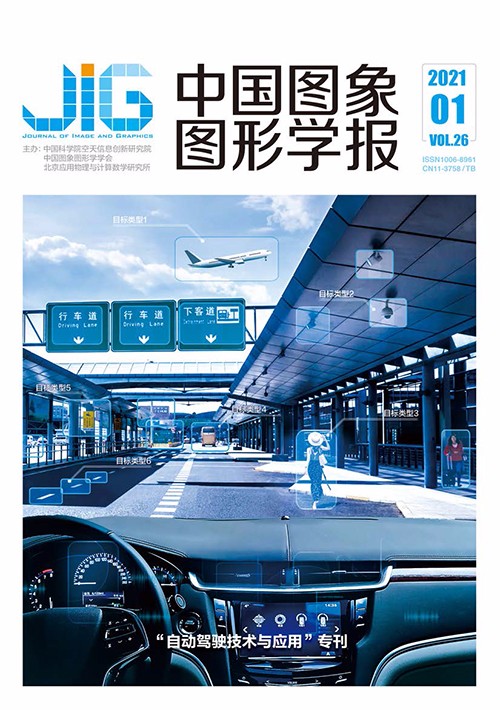
面向智能驾驶测试的仿真场景构建技术综述
任秉韬1, 邓伟文1,2,3, 白雪松1, 李江坤1, 纵瑞雪1, 朱冰3, 丁娟4(1.北京航空航天大学交通科学与工程学院, 北京 100191;2.北京航空航天大学大数据科学与脑机智能高精尖创新中心, 北京 100191;3.吉林大学汽车仿真与控制国家重点实验室, 长春 130025;4.浙江天行健智能科技有限公司, 嘉兴 314000) 摘 要
随着汽车智能化程度的不断提高,智能汽车通过环境传感器与周边行驶环境的信息交互与互联更为密切,需应对的行驶环境状况也越来越复杂,包括行驶道路、周边交通和气象条件等诸多因素,具有较强的不确定性、难以重复、不可预测和不可穷尽。限于研发周期和成本、工况复杂多样性,特别是安全因素的考虑,传统的开放道路测试试验或基于封闭试验场的测试难以满足智能驾驶系统可靠性与鲁棒性的测试要求。因此,借助数字虚拟技术的仿真测试成为智能驾驶测试验证一种新的手段,仿真场景的构建作为模拟仿真的重要组成部分,是实现智能驾驶测试中大样本、极限边界小概率样本测试验证的关键技术,这对提升智能驾驶系统的压力和加速测评水平显得尤为重要。面向智能驾驶测试的仿真场景构建技术已成为当前汽车智能化新的研究课题和世界性的研究热点,作为一种新兴技术仍面临许多挑战。本文提出了面向智能驾驶测试的仿真场景构建方法,系统阐述了国内外研究工作的进展与现状,包括场景自动构建方法和交通仿真建模方法,重点分析一些值得深入研究的问题并围绕场景构建技术的发展趋势进行了讨论分析,最后介绍了团队相关研究在2020中国智能驾驶挑战赛仿真赛和世界智能驾驶挑战赛的仿真场景应用情况。
关键词
Technologies of virtual scenario construction for intelligent driving testing
Ren Bingtao1, Deng Weiwen1,2,3, Bai Xuesong1, Li Jiangkun1, Zong Ruixue1, Zhu Bing3, Ding Juan4(1.School of Transportation Science & Engineering, Beihang University, Beijing 100191, China;2.Beijing Advanced Innovation Center for Big Data and Brain Computing, Beihang University, Beijing 100191, China;3.State Key Laboratory of Automotive Simulation and Control, Jilin University, Changchun 130025, China;4.PanoSim Technology Company, Limited, Jiaxing 314000, China) Abstract
With the continuous improvement of vehicle intelligence, the interaction of vehicles with the surrounding environment through perception is increasing. The environment that needs to be dealt with, including many factors such as roads, surrounding traffic and weather conditions, is becoming increasing complex. Limited by the development cycle and cost, especially safety factors and the consideration of complex and diverse working conditions, traditional open road or closed field tests are difficult to meet the requirements of intelligent driving testing. Therefore, simulation test based on digital virtual technology has become a new important means for intelligent driving testing and verification. The simulation test mainly adopts a combination of accurate physical modeling, efficient numerical simulation, and high-fidelity image rendering to realistically construct human-vehicle environment models, including vehicles, roads, weather and lighting, and traffic, and various types of vehicles. The construction of virtual scenarios is a key technology simulation and is particularly important for improving the pressure and acceleration of intelligent driving testing. The virtual scenarios can meet the needs of a large number of diverse test samples to reflect the complex and changeable application environment of intelligent driving. They can also provide a large number of labeled datasets for machine learning that can contain rich data with boundary feature scenario content and lay a solid data foundation for deep learning perception and reinforcement learning planning algorithms. Therefore, the simulation scenario construction technology for intelligent driving test has been investigated worldwide in the current automotive intelligence. As an emerging technology, it still faces many challenges, and its methods need to be studied in depth. This paper systematically expounds the progress and current situation of domestic and foreign studies in simulation scenario construction technology, including automatic scenario construction methods and traffic simulation modeling methods, and focuses on some issues worthy of in-depth study. In the research of scenario construction methods, the key elements and characteristics of the limited scenarios can reflect the infinite richness and complex driving environment. A deep understanding of the network structure and mutual coupling of the scenario is essential for the research of virtual scenario construction. Establishing a description method of the scenario limit and boundary characteristics to form the scenario automated generation method can maximize the potential of accelerated testing of intelligent driving. Researchers have promoted the rapid development of scenario generation technology from different perspectives. However, they often use parameter traversal search ideas to determine the system state space. The development and testing is time consuming and labor intensive due to the unlimited expansion of scenario search. The construction of a scenario with dangerous characteristics requires in-depth exploration of the safety boundary of the ego vehicle driving. Thus, the constructed corner scenario can provide effective information corresponding to real driving for realizing the enhanced generation of the corner characteristics of the scenario. This condition responds to the accelerated testing of intelligent driving systems above level four. In terms of traffic modeling methods, a deep understanding of the driving behavior and interaction characteristics of vehicles is the basis and primary task. Determining the influence law of vehicle driving motion in data information and establishing the traffic model with random dangerous characteristics are the key to realize intelligent driving testing. The current data-driven traffic simulation modeling research mainly describes the microscopic behavior of traffic, but the accurate and true description of driving behavior characteristics is insufficient. The model input is the mutual movement relationship between the vehicle and the surrounding vehicles, and the model output is the speed or trajectory of the vehicle's movement. However, the diversity of results mainly depends on the amount of input data. If the amount of input data is small, the simulation results are monotonous, relying excessively on input data, and lack versatility. Simulating the motion and interaction behavior of different types of agents in a heterogeneous environment is difficult, especially at traffic intersections. At present, replacing the role of physical mechanism models in generality is difficult. This paper introduces the application of PanoSim simulation platform developed by our team and the related research in 2020 China Intelligent Driving Challenge and World Intelligent Driving Challenge. The intelligent driving challenge is based on a variety of scenarios and traffic environments built by the PanoSim simulation environment. This condition allows participating teams to access the simulation scenario database for obtaining vehicle-mounted sensor information in the simulation environment, such as camera video streams, millimeter wave radar data, lidar point cloud data, and true value information. The simulation scenarios of the intelligent driving challenge are mainly divided into two categories: decision-control and perception-decision-control groups. With the continuous development of computer software and hardware, real-time graphics and image processing, virtual reality, especially parallel processing and image rendering and other simulation technologies, and the environment simulation, and sensor modeling technology, the simulation technology for vehicle testing will become the key factor of vehicle intelligent driving technology, product development, and core competency of technology and products.
Keywords
vehicle intelligent driving virtual simulation simulation test scenario construction traffic modeling intelligent driving challenge
|



 中国图象图形学报 │ 京ICP备05080539号-4 │ 本系统由
中国图象图形学报 │ 京ICP备05080539号-4 │ 本系统由